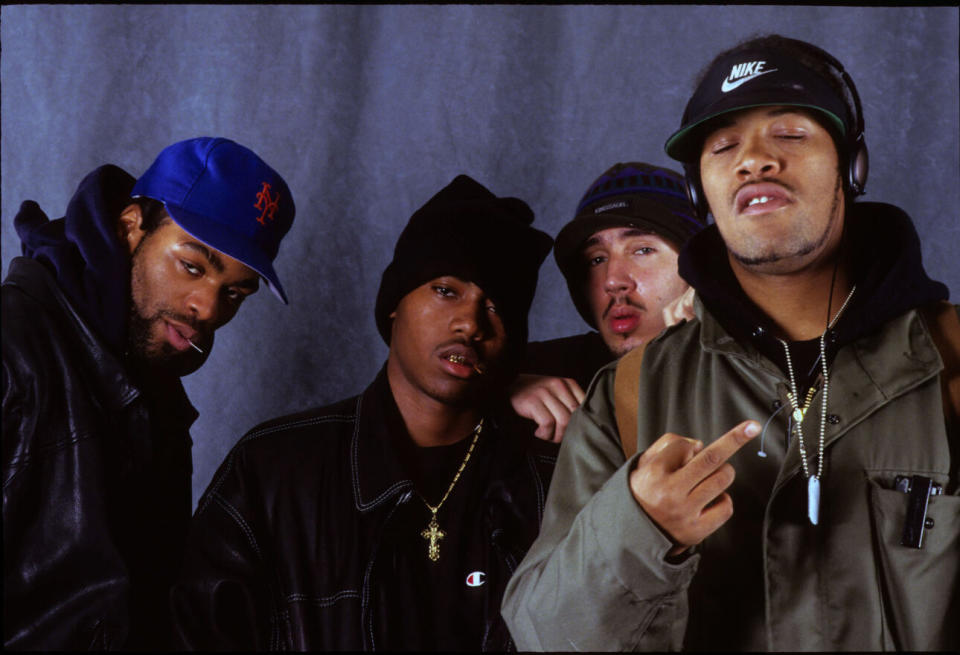N.Y. State of Mind: Nas’ ‘Illmatic’ at 30


Few hip-hop albums transcend eras or withstand the disposal of one sound for another. But one body of work that’s weathered the ever-evolving terrain is Nas’ landmark debut, Illmatic.
More from Spin:
Opening to the cascading sounds of subway train cars, screeching from one New York City rail line to the next, Illmatic draws listeners into the world of the chipped-tooth, Queens-bred MC.
Anticipation for Nas’ debut was high. At age 20, he was three years removed from his legendary verse on the Main Source posse-cut “Live at the Barbeque,” which attracted label execs wanting to ink a deal with the promising lyricist.
Through a connection with former 3rd Bass rapper MC Search, Sony Music’s Columbia Records managed to strike a deal with Nas in 1992. And on April 19, 1994, the poetic rhymer was crowned a prophetic child of hip-hop, one in a position to restore New York’s musical dominance.

With Dr. Dre’s The Chronic and Snoop Dogg’s 1993 classic, Doggystyle, the hip-hop mecca fell to the background for the first time. The G-funk sound was the sound of the era, and alternative acts like Souls of Mischief and the Pharcyde were strengthening the West Coast’s grip.
New York needed a new legion of artists to spark its reemergence, and Nas’ Illmatic swung the momentum back to the East Coast. It also restored the reputation of Queensbridge, home of the fearsome Juice Crew (featuring such pioneers as MC Shan and Marley Marl), who fell to South Bronx’s KRS-One and Boogie Down Productions during the legendary “Bridge Wars” in the late ‘80s.
Nas, inspired by the classic battle, was driven to enliven the housing project that shaped him. “I had to represent,” Nas said in a 2019 interview with Drink Champs. “The pressure was on the borough and my project. And just getting into the game, you had to have something to say, so I definitely had to push the pen hard because, if not, it would’ve never [flown].”
The 10-song LP was a memoir that chronicled Nas’ days on hardened street corners, witnessing the perils of drug abuse and street violence from a bird’s eye view. Nas’ vocal command, silk-smooth delivery, and the potency of his poetic rhymes elevated each track.
The timeless boom-bap soundscape laid the ground for Nas, who unloaded vibrant tales of street life, declarations of lyrical supremacy, and prophecies on “It Ain’t Hard to Tell,” “Represent,” and the nostalgia-fueled “Memory Lane (Sittin’ in da Park).”
“One Love” is a soul-stirring tale of incarceration, and “Life’s a Bitch” is a celebration of life through the growing pains of adolescence. “N.Y. State of Mind” quickly became a Tri-State anthem. Nas said in the 2014 documentary Time Is Illmatic that it was strategically placed near the top of the tracklist to “bring [listeners] to hell and back.”
The architects behind Illmatic’s sound were legendary producers like DJ Premier, Large Professor, Pete Rock, Q-Tip, and L.E.S. And while their avant-garde jazz templates, reverberating drum patterns, and mesmerizing loops were top of the line, Large Professor said they wouldn’t have the same effect without Nas’ masterful touch.
“The beats were cool,” the producer told HipHopDX in 2014. “They were good backdrops, but just the lyrics and the experience that he was putting down over those beats is why that album is heralded the way it is today.”
Following the release of Illmatic, Nas was championed as the second coming of Rakim, and the album received sweeping praise from fans and critics. The project scored a five-mic review from The Source, which was dubbed the “Bible of Hip-Hop” in the early ‘90s.

Former Hot 97 radio personality Minya Oh, who worked at The Source as an intern, was the one who penned the review under the moniker “Shortie.” In a 2014 interview with NPR, Oh talked about how the album’s vivid stories and production inspired her to award Illmatic with the rare distinction.
“Everything that I tried to analyze, I just couldn’t get away from the fact that I couldn’t find anything wrong, and that I also didn’t think it was ever gonna go away,” Oh said. “Or that I was never gonna not want to listen to this.”
The praises didn’t immediately translate to album sales. Illmatic reportedly debuted at No. 12 on the Billboard 200, only selling around 60,000 in its first week. The LP’s iconic singles also failed to scratch the charts.
The underwhelming numbers were partly due to the album’s pre-Internet bootleg leak, which led to the album’s premature circulation. “Columbia was tripping,” Nas told Clash. “It was everywhere, months even before it was released.”

But 30 years after its release, the album has finally earned its due. According to the Recording Industry Association fo America, Ilmmatic has sold more than two million copies, and it’s still heralded as one of the best albums of all time, regardless of genre. (Rolling Stone ranked Illmatic no. 44 on its list of The 500 Greatest Albums of All Time in 2020.) “I think it’s a perfect record,” Nas told Fuse in 2012. “I couldn’t say that before, but there’s so many different dynamics to it.”
Nas’ debut propelled the Grammy-winning artist to a spot he’s comfortably occupied for decades—atop the pantheon of all-time great MCs. It also helped reignite East Coast rap and set the stage for other New York artists to rise to stardom. And with each passing anniversary, Nas proves that time is truly Illmatic.
While Nas told Billboard he no longer listens to his debut, the continued support and admiration for his work proves the immortality of classic records, no matter how much time elapses. “It means hip-hop is here to stay,” he said. “I said hip-hop was dead, and of course, the shit died, but the core of it was never touched. You can’t erase what happened.”
To see our running list of the top 100 greatest rock stars of all time, click here.

